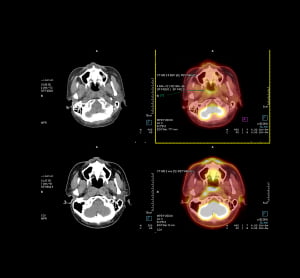How Does Artificial Intelligence Help Detect Disease

One of the biggest breakthroughs in medical imaging is the use of machine learning algorithms to help detect tumours, lesions and other abnormalities in cells.
Amazingly enough, the technology was first developed to tell different types of bread apart but the principle (and later on, the actual bread scanning technology itself) could detect different forms of cancer at a rate higher than doctors could by eye, significantly faster.
It works through the use of a concept known as machine learning, which is a fundamental part of how artificial intelligence works.
Conventional computer systems follow a set of instructions to complete a set of concrete tasks. Whilst the machinery could be set up for a computer to scan medical imagery, it would be very difficult for it to interpret that data due to how many variables are in place.
Whilst you could theoretically program a system to look for every slight difference, it would take so long that it was often more efficient for doctors to look through images by hand.
Machine learning, by contrast, involves training a system to provide the right answer without being explicitly programmed to do so.
It starts by sending training data into an algorithm, which helps the system to learn what to look for, and then once it is suitably trained can be used to identify whatever is required.
Whilst AI has been used in many different fields, in the medical world it is used to interpret data from MRI scans or cell samples, first by being told what to look for, and then using that model on a vast amount of data.
This makes a suitably trained system incredible fast, allowing for an entire slide of cells to be checked at once and significantly speeding up the diagnostic process.
As the key to saving lives from long term illnesses such as cancer is to detect and diagnose it at early as possible, the use of AI can help to save lives.
CIMAR have a unique eco-system of connected AI partners for respiratory, oncology, cardiology and more and provide the connectivity to intelligently route imaging to and from each AI vendor.